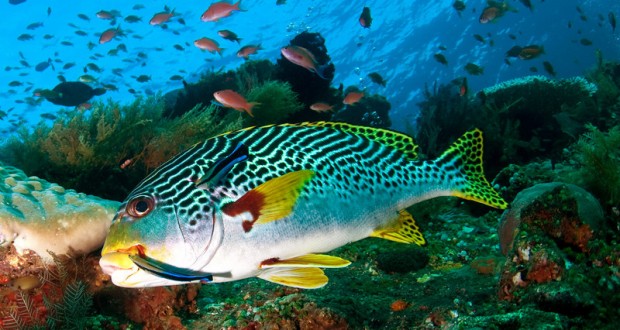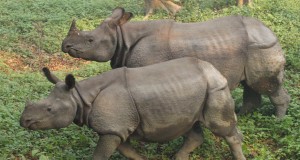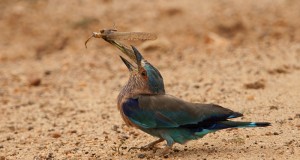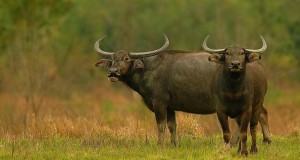In February 1976, India declared an Exclusive Economic Zone along its extensive coastline and now has jurisdiction over 2 million square kilometers of sea area.
A rich and varied marine life is present in the Indian seas which is also characterized by a diversity of habitats — the barrier reefs and atolls of the Lakshadweep Islands, the fringing reefs of the Andaman-Nicobar Islands, the Gulf of Mannar and the Gulf of Kutch, the mangrove and coastal lagoons, lakes, backwaters, estuaries and mudflats, and the rocky and sandy shores, harboring myriads of animal and plant species.
Human Impact: Man’s greatest impact on marine life is in the coastal waters and estuaries. Using diverse types of fishing craft and gear, India alone fishes about 1.6 million tonnes of marine fish annually, with sardin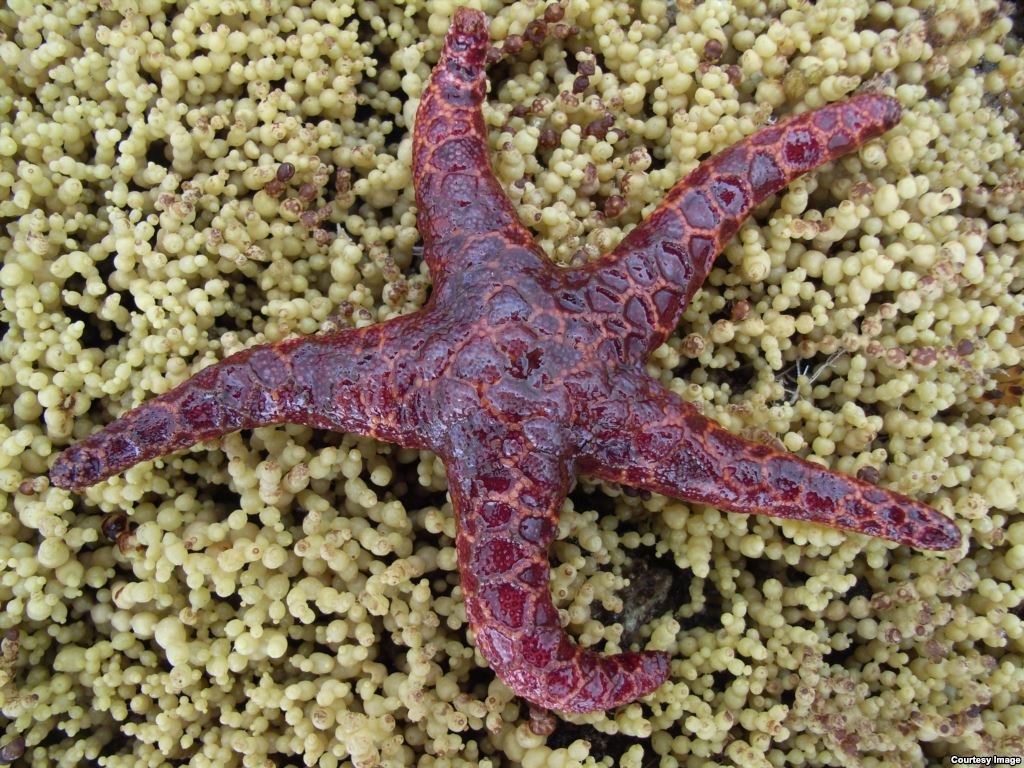 es, mackerel, Bombay-duck and prawns forming the major catches. Thirutai or gray mullet ( knugil cephalus), kanumbu ( Mugil macrolepis), Indian salmon (Polrnemus indices) and bhekti (Lates calcarifer) in the hauls are not uncommon. Marine penaeid prawns breed in the sea and the larvae of some species such as the tiger prawn ( Penaees monodon) and the white prawn ( P. indices) emigrate to the Cochin backwaters and with the tidal waters are allowed to enter the paddy fields through sluices, where they are netted every few days as the water is allowed to ebb with the tide.
es, mackerel, Bombay-duck and prawns forming the major catches. Thirutai or gray mullet ( knugil cephalus), kanumbu ( Mugil macrolepis), Indian salmon (Polrnemus indices) and bhekti (Lates calcarifer) in the hauls are not uncommon. Marine penaeid prawns breed in the sea and the larvae of some species such as the tiger prawn ( Penaees monodon) and the white prawn ( P. indices) emigrate to the Cochin backwaters and with the tidal waters are allowed to enter the paddy fields through sluices, where they are netted every few days as the water is allowed to ebb with the tide.
Visit to Kovalam: Kovalam, the picturesque palm-frin ged beach, 10 miles (16 km) south of Trivandrum, is also a place where you find abundant marine life, the most desired being the spiny lobster (Pantdirus hormares) and the brown mussel ( Perna indices).
In Lakshadweep: Ten of the islands of the Lakshadweep archipelago are inhabited. The lagoons in these islands are relatively shallow and the largest is in Minicoy. Luxuriant growth of branching and massive corals such as species of Acropora, knontipora, Pocillopora and Porites, along w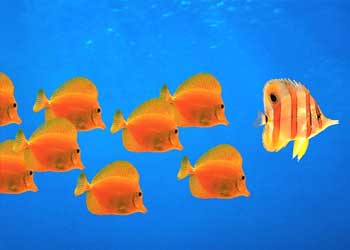 ith associated fish and invertebrates occur in the reefs. The one item most sought after in the lagoons is bait fish, some 60 or so species used for attracting the skipjack and young yellowfm tuna. The reefs also support spiny lobsters and a good many species of fish. A few miles to the north of Kavaratti Island lies Pitti Island which is one among the very few rookeries for sea birds in India. Both the sooty tern and the noddy tern breed on this tiny island about 71/2 acres (three hectares) in area. A number of other species of sea birds also congregate here.
ith associated fish and invertebrates occur in the reefs. The one item most sought after in the lagoons is bait fish, some 60 or so species used for attracting the skipjack and young yellowfm tuna. The reefs also support spiny lobsters and a good many species of fish. A few miles to the north of Kavaratti Island lies Pitti Island which is one among the very few rookeries for sea birds in India. Both the sooty tern and the noddy tern breed on this tiny island about 71/2 acres (three hectares) in area. A number of other species of sea birds also congregate here.
The green turtle (Chelonia midas) is known to nest at Suhuli Parr, Pitti Island and Minicoy Island. It is at this southernmost island in the Lakshadweep that mass — a cured smoked and dried product which is a must with every meal for the islanders — is made from the tuna meat. The once ornate sail fishing boats of Minicoy known as odams are now almost a thing of the past, having been replaced by mechanized boats fitted with a bait well for carrying live bait fish for rod and line fishing for tuna.
Mannar: Krusadai Island in the Gulf of Mannar is an important center for students of marine biology from all over the country. The island now comes within the delineated area of the National Marine Park in th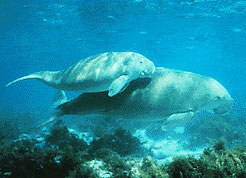 e Gulf of Mannar, covering a chain of 21 islands from Rameswaram to Tuticorin. The park has been established with a view to conserving the fringing coral reef and sea grass ecosystems from further human interference and giving adequate protection to the dugong or sea cow ( Dugong degon), sea turtles and other vulnerable and endangered species, including the unique enteropneustan or acorn worm ( Ptvcodera lava ) occurring in Krusadai. South of this, off Tuticorin, are the pearl banks or parrs and conch beds. Prior to the mid-1960s, a number of pearl fisheries were conducted from time to time in the Gulf of Mannar, the pearl oyster being Pinctada fucata. A falling number of oysters in the parrs has resulted in the failure of this fishery during the last 20 years.
e Gulf of Mannar, covering a chain of 21 islands from Rameswaram to Tuticorin. The park has been established with a view to conserving the fringing coral reef and sea grass ecosystems from further human interference and giving adequate protection to the dugong or sea cow ( Dugong degon), sea turtles and other vulnerable and endangered species, including the unique enteropneustan or acorn worm ( Ptvcodera lava ) occurring in Krusadai. South of this, off Tuticorin, are the pearl banks or parrs and conch beds. Prior to the mid-1960s, a number of pearl fisheries were conducted from time to time in the Gulf of Mannar, the pearl oyster being Pinctada fucata. A falling number of oysters in the parrs has resulted in the failure of this fishery during the last 20 years.
The conch ( Xances pyrum) is also known as the sacred conch on account of its use in religious ceremonies. Skin diving is done for collecting conch in depths up to 65 feet (20 meters) from November to mid-May in the Gulf of Mannar and June to October in Palk Bay with the search always on for the rare sinistral shell (Valampuri chanku) which is considered priceless.
Seaweeds: The Mandapam-Rameswaram coasts are rich in seaweeds but the natural beds are being rapidly depleted to meet industrial demands. A number of Agrophytes (species of Gracelaria, Gehdiella and Hypnea), and Ahgnophytes (species of Sargassem and Turbi-naria) occur in the area. It is a common sight to see a few hundred men, women and children collecting seaweeds from the intertidal and shallow areas in and around this chain of islands for supplying to the seaweed processing industries in the hinterland and other parts of the country.
Dugongs and Whale: The dugong is the most endangered of India’s marine animals. The residual population of this herbivore in the Gulf of Mannar and Palk Bay is very vulnerable. Excessive and unregulated fishing with mechanized boats and canoes resulting in incidental capture, injuries due to boat hits and various methods of illegal take have drastically depleted t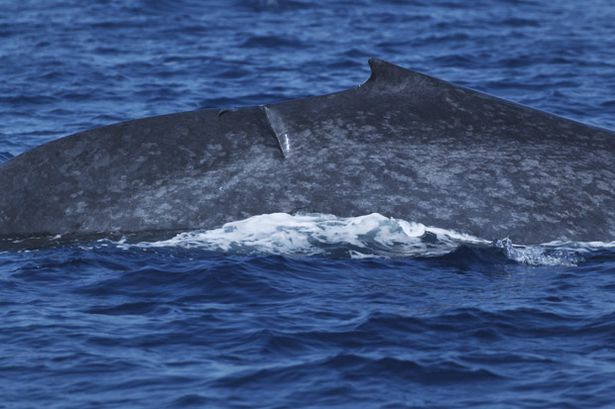 he population. At the turn of the century they were so abundant in the area that there used to be regular organized herding and spear fishing for them. They are closely associated with the sea grass ecosystem in the shallow sub-littoral and intertidal areas where beds of Halophila ovalis, Zosiera sp. and Cvmodacea spp. occur. It is today a rare event to see a dugong in the foraging grounds or in the open water around the islands. They move individually or in small groups, with the calf riding on the cow while submerged. Every three or four minutes they come up to the surface to breathe, normally in a horizontal position, but when curious about a floating object or an approaching boat, or when there is wave action, they break the surface more vertically. The uprooted floating sea grass sticking to the dugong’s head probably gave rise to the legends about mermaids.
he population. At the turn of the century they were so abundant in the area that there used to be regular organized herding and spear fishing for them. They are closely associated with the sea grass ecosystem in the shallow sub-littoral and intertidal areas where beds of Halophila ovalis, Zosiera sp. and Cvmodacea spp. occur. It is today a rare event to see a dugong in the foraging grounds or in the open water around the islands. They move individually or in small groups, with the calf riding on the cow while submerged. Every three or four minutes they come up to the surface to breathe, normally in a horizontal position, but when curious about a floating object or an approaching boat, or when there is wave action, they break the surface more vertically. The uprooted floating sea grass sticking to the dugong’s head probably gave rise to the legends about mermaids.
Not far from here, in the Sri Lankan waters off Trincomalee is where the blue whale has recently ben observed to (Balaeno-ptera musculus) calve. The stranding of baleen whales ( B. musculus, B. borealis) and young and adult sperm whales (Physeter macrocephalus) in the Gulf, Palk Bay and along the Madras coast indicate the proximity of the breeding grounds of these species, an area promising for whale watching.
Turtles: The world’s largest aggregation or arrihada of sea turtles takes place along the Gahirmata coast of Orissa where, in January or early Febuary, over 300,000 olive ridley (Lepidoehelys olivaceus) females emerge for nesting along a six-mile (10-km) stretch of the beach within five to seven days. Access to this nesting beach which forms the eastern fringe of Bitarkanya Sanctuary is difficult. A second arribada of the same magnitude takes place at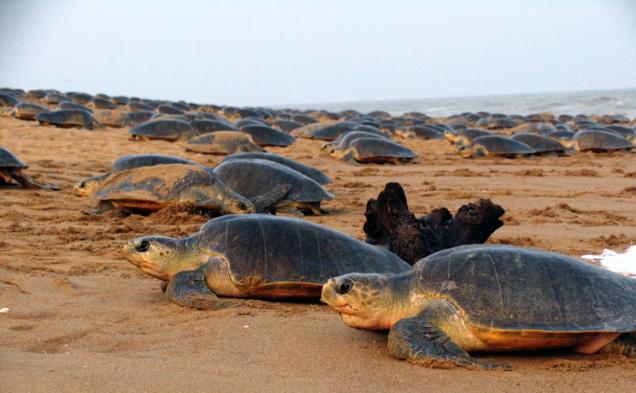 Gahirmata in March or early April. The hatchlings, in millions, emerge after an incubation period of about 45 to 58 days, depending on the time of the arribada and the prevalent temperatures. A recent significant discovery is that turtle eggs developing above a pivotal temperature all turn out to be females and those below, males. A headstarting program of olive ridley can be seen at Kovalam (earlier Covalong) 22 miles (35 km) south of Madras (not to be confused with the place of the same name in Kerala) where due to heavy egg predation by man and wild animals, freshly laid clutches of eggs of the olive ridley are transplanted in hatcheries and the hatchlings released on the same beach.
Gahirmata in March or early April. The hatchlings, in millions, emerge after an incubation period of about 45 to 58 days, depending on the time of the arribada and the prevalent temperatures. A recent significant discovery is that turtle eggs developing above a pivotal temperature all turn out to be females and those below, males. A headstarting program of olive ridley can be seen at Kovalam (earlier Covalong) 22 miles (35 km) south of Madras (not to be confused with the place of the same name in Kerala) where due to heavy egg predation by man and wild animals, freshly laid clutches of eggs of the olive ridley are transplanted in hatcheries and the hatchlings released on the same beach.
All five species of sea turtles are on the endangered list. Several stretches of the beaches along the mainland coast and Andaman-Nicobar and Lakshadweep have been identified as nesting sites of the green turtle ( Chelonia mvdas), the hawksbill (Ereihrnochelvs imbricata), the leathery turtle ( Demochelys coreacea) and the olive ridley, with very little known about the loggerhead (Caret caret ).
Plankton Blooms and Noxious Animals: A major feature along the west coast of India is the very large scale blooms of the nitrogen-fixing bluegreen algae (Trichodesmium erythreum) from February to May. No deleterio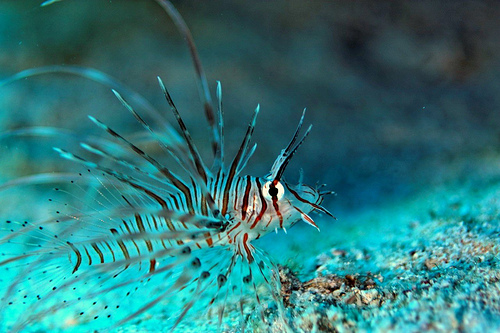 us effects are noticed. On the other hand, “red tides” caused by the dinoflagellate ( Notihuca miliaris) results in fish mortality. Still more dangerous are blooms of HorneIhia marina, another highly toxic dinoflagellate which are seen at the onset of the monsoon along the Kerala coast, causing mortality of fish, crustaceans and other invertebrates.In treading in the lagoons of the Lakshadweep one has to be careful not to step on the spines of the well-camouflaged stone fish or to handle the beautiful scorpion fish, the spines of which are venomous and injury from which could be excruciatingly painful.
us effects are noticed. On the other hand, “red tides” caused by the dinoflagellate ( Notihuca miliaris) results in fish mortality. Still more dangerous are blooms of HorneIhia marina, another highly toxic dinoflagellate which are seen at the onset of the monsoon along the Kerala coast, causing mortality of fish, crustaceans and other invertebrates.In treading in the lagoons of the Lakshadweep one has to be careful not to step on the spines of the well-camouflaged stone fish or to handle the beautiful scorpion fish, the spines of which are venomous and injury from which could be excruciatingly painful.
Among the coelenterates, the sting of the nematocysts of physalis physahis, commonly known as the Portuguese Man-o’-War could even be fatal. Physalia occurs along the east coast with the commencement of the northeast monsoon. Porpila porpila and Vellela vellela, two chondrophorans which immobilize prey organisms with their stinging cells, are closely associated as commensals with young fish. Among corals, the sting from the polyps of Millipora is said to be very painful.
The Whale Shark: The largest of all fishes, namely the passive whale shark ( Rhineodon typhus), growing to a length of 40 feet (12 meters) or so is a visitor to the Indian coastal waters and, to date, the largest number of captures of this giant shark has been along the Gujarat coast where it is harpooned or caught in gill nets for its liver oil, the carcass being discarded. Ga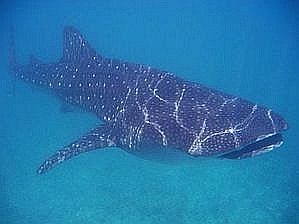 me Fish: Sport fishing possibilities in the sea are great, especially as excellent game fish such as tuna, selfish , wahoo, marlin, swordfish, sailfish, barracuda, dolphinfish, rainbow runner, telang queenfish, pelagic shark and many others are available. There are areas along the west coast of India (Ratnagin , Goa, Karwar, Cochin), the Gulf of Mannar (Tuticorin, Mandapam), the Lakshadweep sea and the Andaman and Nicobar Islands where these can be taken in rod and tackle. They are now obtained in surface trolling from sailboats, mechanized boats and catamarans.
me Fish: Sport fishing possibilities in the sea are great, especially as excellent game fish such as tuna, selfish , wahoo, marlin, swordfish, sailfish, barracuda, dolphinfish, rainbow runner, telang queenfish, pelagic shark and many others are available. There are areas along the west coast of India (Ratnagin , Goa, Karwar, Cochin), the Gulf of Mannar (Tuticorin, Mandapam), the Lakshadweep sea and the Andaman and Nicobar Islands where these can be taken in rod and tackle. They are now obtained in surface trolling from sailboats, mechanized boats and catamarans.
Mangrove: The estimates are that there are nearly a million acres (405,000 hectares) of mangrove forests along India’s coasts, the most i mportant being the Sunderbans in West Bengal. While large areas have already been denuded of mangrove for conversion to agricultural land, human settlement, industries, salt production and other uses, an awareness has grown concerning the need for conservation and management of this resource. Mangrove waters get greatly enriched with nutrients and act as an important nursery for many species of marine animals which later return to the sea for maturing and breeding. Some, like the much sought after Indian shad (Hilsa ihisha) in West Bengal, enter the estuaries for breeding in freshwater.

